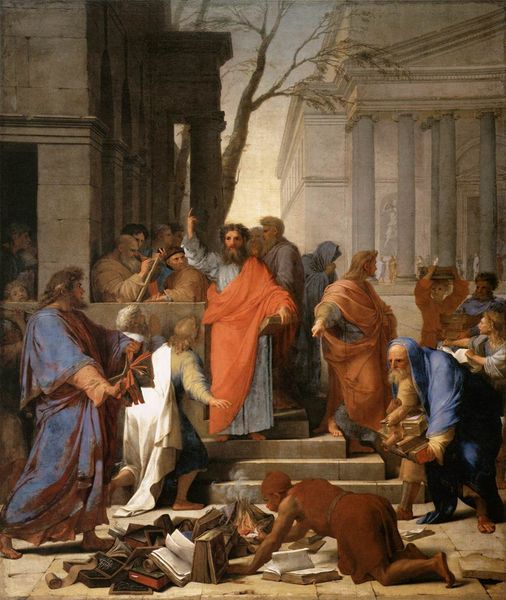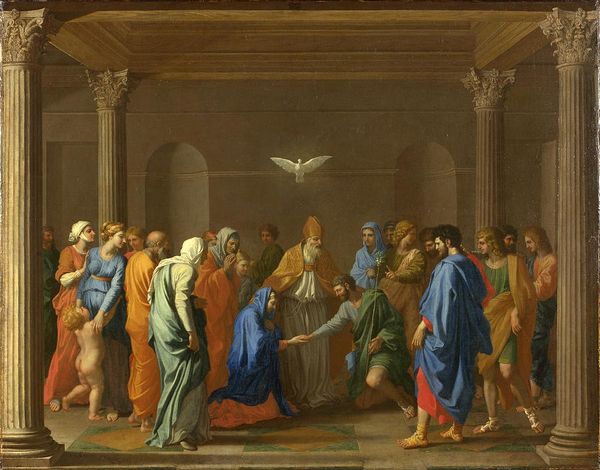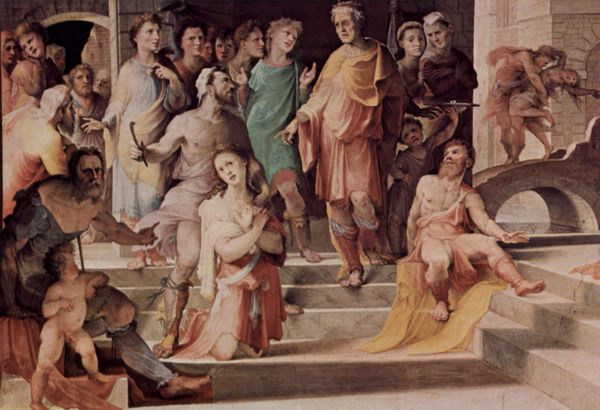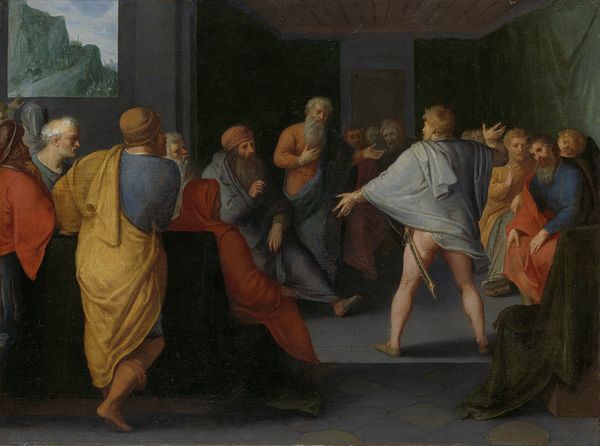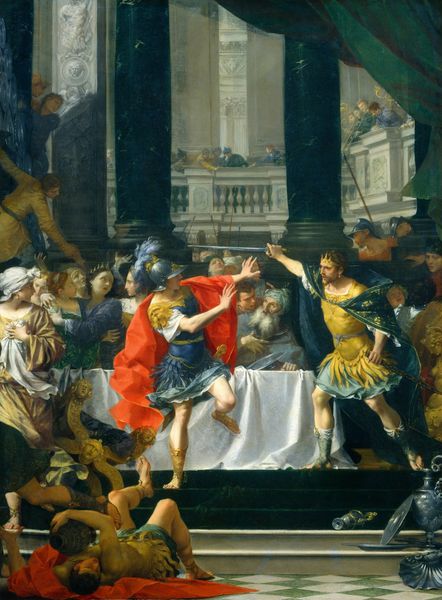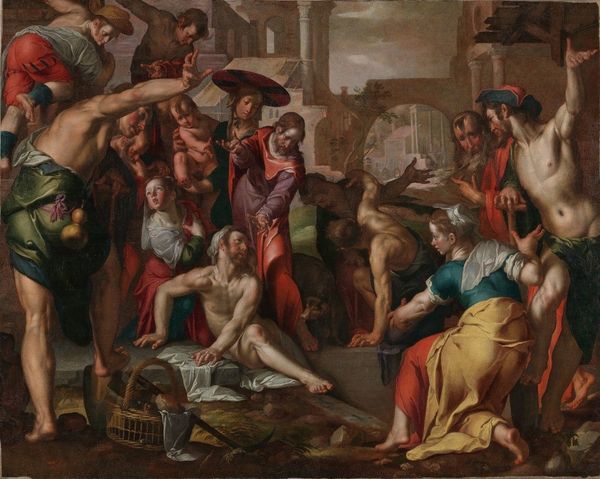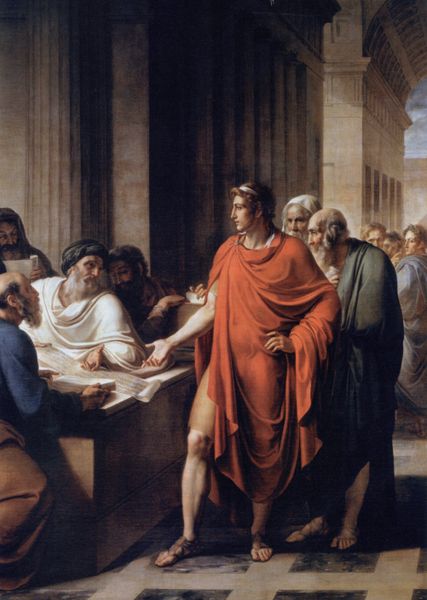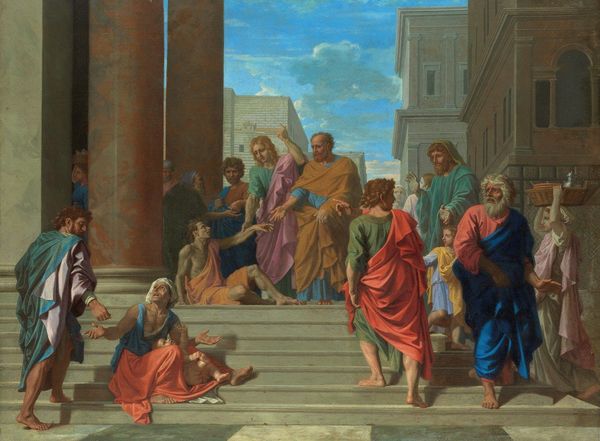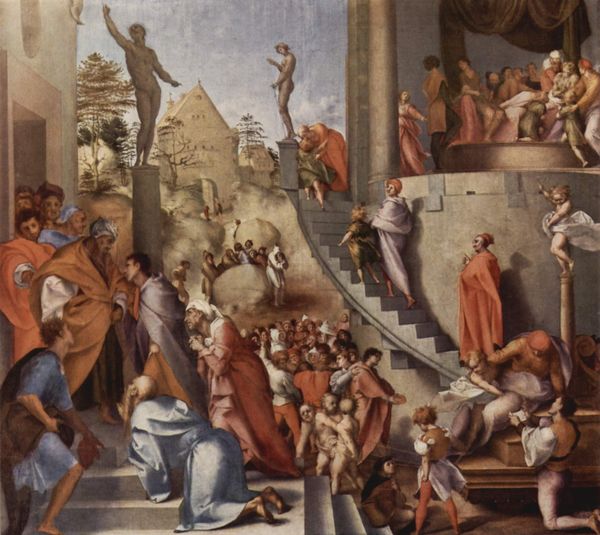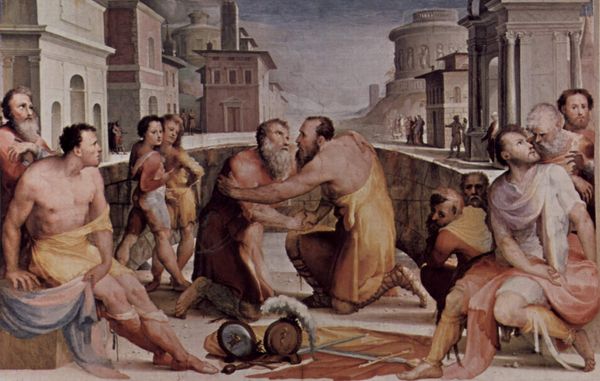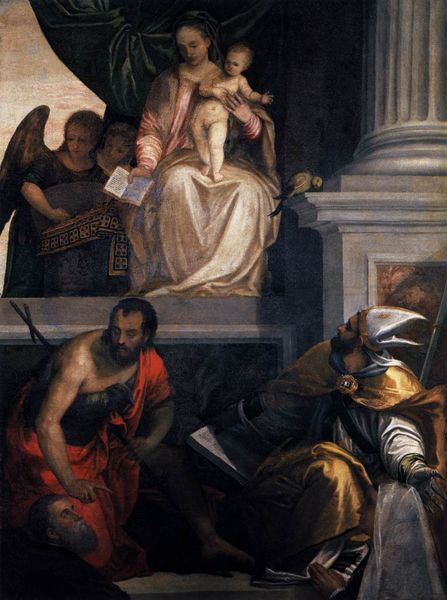
Visitation (Meeting of Mary and Elizabeth in the Presence of Saints Joseph and Jerome) 1550 - 1600
0:00
0:00
pellegrinotibaldi
Rijksmuseum
painting, oil-paint
#
narrative-art
#
painting
#
oil-paint
#
mannerism
#
figuration
#
oil painting
#
genre-painting
#
history-painting
#
academic-art
#
italian-renaissance
Dimensions: height 76 cm, width 102 cm, depth 4.8 cm
Copyright: Rijks Museum: Open Domain
Curator: Pellegrino Tibaldi, working around the mid-16th century, rendered this oil on canvas, now held at the Rijksmuseum. The piece is entitled *Visitation (Meeting of Mary and Elizabeth in the Presence of Saints Joseph and Jerome)*. What are your immediate thoughts? Editor: Overcrowded. The composition feels almost chaotic, though the bright colors, especially the golds and reds, suggest grandeur and importance. There's a theatricality to the arrangement. Curator: "Theatrical" is a good descriptor. Tibaldi’s work is certainly indicative of the Mannerist style, a period characterized by artifice and exaggeration as a reaction to the High Renaissance. It is interesting how it reflects and was supported by certain patronages within the Italian church system during a fraught Reformation era. Editor: Let's look more closely at the interplay of figures and how it contributes to this heightened sense of drama. Mary and Elizabeth, locked in an embrace, become the focal point, though visually they’re fighting for space within a large crowd. And those saints, Jerome and Joseph – their expressions almost border on the melodramatic. Curator: Precisely. Tibaldi used this figuration and its composition in an almost manufacturing style of devotional affect, creating works that visually asserted a conservative set of theological positions. One might investigate how it reproduces gendered and social norms, offering its aristocratic viewers an almost propagandistic interpretation of religious history. Editor: Consider the perspective, too. It's skewed, almost flattened, and the figures are rendered with elongated limbs – hallmarks of Mannerism. There's also an intensity in the surface handling. The material qualities contribute greatly. Curator: I find this visual language entirely successful, a production in the business of meaning-making intended to shape and reproduce the values of the wealthy elite through its means. The fact that we can analyze the image here and still be provoked is part of that productive function, isn’t it? Editor: Indeed. Despite the centuries that separate us, the power of formal arrangement still resonates and initiates inquiry and contemplation, regardless of original intention. It’s certainly a striking artifact and instance within the tradition of painting.
Comments
No comments
Be the first to comment and join the conversation on the ultimate creative platform.
